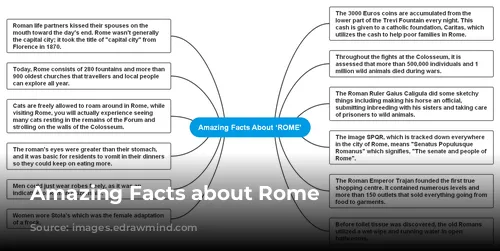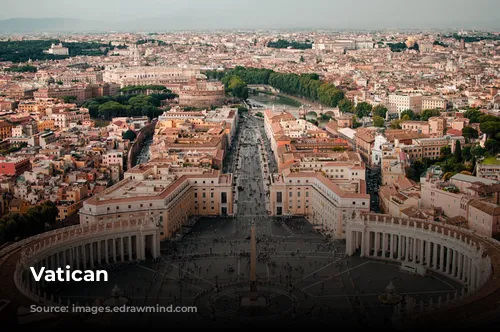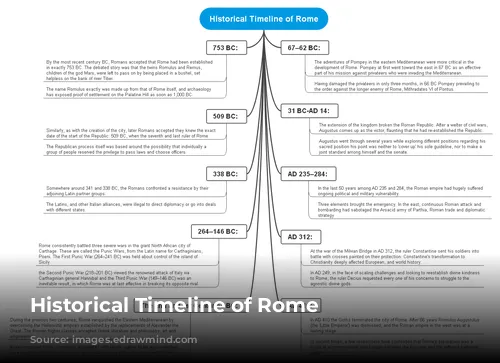The famous saying “All roads lead to Rome” isn’t just a figure of speech. Looking back at history, all paths truly did converge on the Roman Empire’s capital. Rome, the Eternal City, was the world’s largest metropolis, dominating a vast empire stretching from Gaul and Spain in the west to Egypt and Asia in the east.
A City of Many Faces
Rome’s influence extends far beyond its geographical boundaries. It was a thriving center of art and culture during the Renaissance, attracting wealthy travelers from around the globe in the 19th century. As the birthplace of Christianity and home to the Roman Catholic Church, it has held a special place in the hearts of believers since the first Holy Year in 1300. This timeless city has always had a magnetic appeal to people from all walks of life.
A City of Constant Change
Rome isn’t a city that stands still. Over its 27 centuries of existence, it has witnessed the rise and fall of empires, the coming and going of popes and emperors, and the flourishing and fading of artistic movements. It’s a city that constantly evolves and reinvents itself, embracing both its past and its future.
The Legend of Romulus and Remus
According to tradition, Rome was founded in 753 BC. The story goes that twin brothers, Romulus and Remus, sons of the god Mars, were abandoned in a basket and left to the mercy of the river Tiber. The basket eventually washed ashore near the future site of Rome. The name Romulus is believed to have been derived from the city itself, and archaeological evidence suggests that a settlement existed on the Palatine Hill as early as 1000 BC.
The Birth of the Roman Republic
The founding of the Roman Republic is also said to have happened on a specific date: 509 BC. The seventh and final king of Rome, the tyrannical Tarquinius Superbus, was supposedly overthrown in a coup by the Roman aristocracy. The Republican system was based on the principle that a group of citizens had the right to make laws and elect officials. This system, while representing a shift in power, would eventually pave the way for the expansion of the Roman Republic.
The Latin War and Beyond
Around 341-338 BC, the Romans faced a challenge from their neighboring Latin allies. After defeating them, the Romans imposed a settlement that solidified their dominance in Italy and beyond. The Latins and other Italian allies were forbidden from engaging in diplomacy or making treaties with other states, solidifying Roman control over the region.
The Punic Wars: A Clash of Titans
Rome’s rise to power was marked by a series of conflicts with the powerful city of Carthage in North Africa, known as the Punic Wars. The First Punic War (264-241 BC) centered on control of the island of Sicily. The Second Punic War (218-201 BC) saw the legendary invasion of Italy by the Carthaginian general Hannibal. Finally, the Third Punic War (149-146 BC) saw Rome’s ultimate victory, effectively ending Carthage as a major power.
The Hellenization of Rome
During the 2nd and 1st centuries BC, Rome conquered the Eastern Mediterranean, defeating the Hellenistic empires established by the successors of Alexander the Great. This conquest led to a significant cultural exchange, as the Roman elite embraced Greek literature, philosophy, art, and engineering. By the late 1st century BC, familiarity with Greek culture became essential for acceptance into Roman high society.
The Rise of Pompey and the Fall of the Republic
Pompey’s campaigns in the Eastern Mediterranean played a significant role in Rome’s development. He initially went east in 67 BC to combat pirates threatening Mediterranean trade routes. After quickly suppressing them, he went on to defeat Rome’s long-time enemy, Mithradates VI of Pontus, in 66 BC.
These military successes contributed to the growth of Rome’s empire but also to the instability of the Roman Republic. After years of civil war, Augustus emerged as the victor, claiming to have restored the Republic. While he experimented with different roles for himself, Augustus ultimately became the first Roman emperor, setting the stage for a new era in Roman history.
The Crisis of the 3rd Century
The Roman Empire faced significant challenges in the last 50 years of the 3rd century AD, marked by political and military instability. Three major factors contributed to the crisis: the relentless pressure of the Parthian Empire in the east, the rise of powerful barbarian confederations, and the struggle for power among Roman emperors.
Constantine and the Rise of Christianity
The Battle of the Milvian Bridge in 312 AD was a turning point in Roman history. Emperor Constantine, who had his soldiers fight under banners bearing crosses, emerged victorious. Constantine’s conversion to Christianity had a profound impact on European and world history. In 249 AD, amid growing unrest, Emperor Decius had attempted to restore divine favor by demanding that all citizens sacrifice to the pagan gods, a move that further complicated the religious landscape of the empire.
The Fall of the Western Roman Empire
In 410 AD, the Goths sacked the city of Rome, marking a devastating blow to the empire. Just 66 years later, Romulus Augustulus, the “Little Emperor,” was deposed, signaling the end of the Western Roman Empire. While some scholars argue that the empire’s decline was a gradual process of compromise and negotiation between Romans and barbarian groups, others emphasize the brutality, destruction, and terror of its fall.
Rome: A City of Wonders
Rome, a city that continues to attract 7-10 million tourists each year, is overflowing with history, art, and delicious food. Despite centuries of exploration, Rome still holds many mysteries. Here are some fascinating facts you may not know about the Eternal City:
- Rome boasts over 280 fountains and over 900 ancient churches, offering endless opportunities for exploration.
- Cats freely roam the city, often seen lounging in the ruins of the Forum or strolling along the walls of the Colosseum.
- Romans had a bigger appetite than their stomachs, and it was common for them to vomit during meals to make room for more food.
- Men could wear robes freely, a symbol of Roman citizenship.
- Women wore “Stola,” a long tunic that was the female equivalent of a robe.
- Every night, thousands of euros are retrieved from the Trevi Fountain. This money is donated to Caritas, a Catholic organization that helps poor families in Rome.
- Roman couples kissed each other on the mouth at the end of the day.
- During the gladiatorial contests held at the Colosseum, it is estimated that over 500,000 people and 1 million wild animals perished.
- Emperor Gaius Caligula indulged in some outlandish behaviors, including appointing his horse to a high office, engaging in incest with his sisters, and feeding prisoners to wild animals.
- Rome wasn’t always the capital city, only assuming that title from Florence in 1870.
- The abbreviation SPQR, found throughout the city, stands for “Senatus Populusque Romanus,” meaning “The Senate and People of Rome.”
- Emperor Trajan built the first true shopping center with multiple levels and over 150 shops selling everything from food to clothing.
- Before the invention of toilet paper, the ancient Romans used wet wipes and running water in public bathrooms.
A Legacy That Endures
Rome has witnessed countless remarkable historical events and experienced significant transformations in its political and social structures, religion, and architecture. The city is renowned for its exceptional design, culture, and social organization, which have left an indelible mark on civilizations worldwide. Modern Rome, with its 280 fountains, over 900 ancient churches, and the nearly 700,000 euros tossed into the Trevi Fountain each year, continues to capture the hearts and imaginations of visitors from all corners of the globe. Rome’s legacy endures through its stunning cuisine, long-lasting infrastructure, and the inspiring tales of a civilization that once ruled the world.



